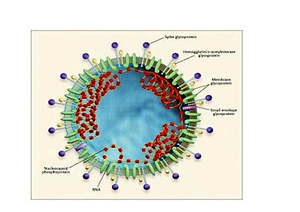REVIEW PAPER
Coronavirus - SARS- CoV-2 - infection prevention - own experience
1
Instytut Medycyny Wsi, Lublin, Polska
Med Og Nauk Zdr. 2021;27(1):7-12
KEYWORDS
TOPICS
ABSTRACT
Introduction:
In December 2019, an epidemic of infections caused by a new beta-coronavirus called SARS CoV-2 (Severe Acute Respiratory Virus Corona-2) broke out in the Chinese city of Wuhan. According to modern taxonomy, the species SARS Cov-2 belongs to the order – Nidovirales, family – Coronaviridae, subfamily – Coronavirinae, Genus – Betacoronavirus, lineage – Sarbecovirus. The World Health Organization (WHO) named the disease caused by the SARS CoV-2 COVID-19 virus (Coronavirus disease) on 11 February, 2020. On 11 March, 2020, after the epidemic had spread to all continents, the World Health Organization declared the COVID-19 pandemic. SARS CoV-2 virus is transmitted by airborne droplets, as well as through contaminated surfaces and objects. The presence of the virus has been shown in the body fluids of infected people, such as nasal and throat secretions, tears, sputum, stool and blood. The incubation period is 5 to 14 days. Non-specific prophylaxis is important in reducing the number of infections caused by SARS CoV-2 virus.
Objective:
The article describes preventive measures undertaken at the Institute of Rural Medicine in Lublin to prevent COVID-19 infections among patients and staff.
Summary:
Scientists emphasize that among the preventive measures, hand washing and disinfection, social distancing, the use of personal protective equipment, and surface decontamination are particularly important, which was confirmed in practice during the SARS epidemic.
In December 2019, an epidemic of infections caused by a new beta-coronavirus called SARS CoV-2 (Severe Acute Respiratory Virus Corona-2) broke out in the Chinese city of Wuhan. According to modern taxonomy, the species SARS Cov-2 belongs to the order – Nidovirales, family – Coronaviridae, subfamily – Coronavirinae, Genus – Betacoronavirus, lineage – Sarbecovirus. The World Health Organization (WHO) named the disease caused by the SARS CoV-2 COVID-19 virus (Coronavirus disease) on 11 February, 2020. On 11 March, 2020, after the epidemic had spread to all continents, the World Health Organization declared the COVID-19 pandemic. SARS CoV-2 virus is transmitted by airborne droplets, as well as through contaminated surfaces and objects. The presence of the virus has been shown in the body fluids of infected people, such as nasal and throat secretions, tears, sputum, stool and blood. The incubation period is 5 to 14 days. Non-specific prophylaxis is important in reducing the number of infections caused by SARS CoV-2 virus.
Objective:
The article describes preventive measures undertaken at the Institute of Rural Medicine in Lublin to prevent COVID-19 infections among patients and staff.
Summary:
Scientists emphasize that among the preventive measures, hand washing and disinfection, social distancing, the use of personal protective equipment, and surface decontamination are particularly important, which was confirmed in practice during the SARS epidemic.
REFERENCES (25)
1.
Pacner KW. Pandemiczne koronawirusy człowieka – charakterystyka oraz porównanie wybranych właściwości HCoV-SARS i HCoV-Mers. http://pm.microbiology.pl 2018/1.
4.
Lu R, Zhao X, Li J, Niu P, Yang B, Wu H, et al. Genomic charac-terisation and epidemiology of 2019 novel coronavirus: implications for virus origins and receptor binding. Lancet. 2020; 395: 565–574.
5.
Pawlik L, Śpiołek E, Fichna J, Tarasiuk A. Charakterystyka wirusa SARS-CoV-2 i potencjalne farmakologiczne sposoby leczenia. Post Biochem. 2020; 66(2). https://doi.org/10.18388/pb.20....
7.
Abramczuk E, Pancer K, Gut W. Niepandemiczne koronawirusy czło-wieka – charakterystyka i diagnostyka. Post Mikrobiol. 2017; 56(2): 205–213.
8.
Wu Z, McGoogan JM. Characteristics of and Important Lessons From the Coronavirus Disease 2019 (COVID-19) Outbreak in China: Sum-mary of a Report of 72 314 Cases From the Chinese Center for Disease Control and Prevention. JAMA. Published online February 24, 2020. doi: 10.1001/jama.2020.2648.
9.
Acta Uroboroi. W kręgu epidemii. Monografia Naukowa Pod Redakcją Dr. Mateusza Dąsala. Wrocław, Wrzesień 2018; 114–122.
13.
Danielsson N, Catchpole M, et al. Novel coronavirus associated with severe respiratory disease: Case definition and public health measure. Euro Surveill. 2012; 17(39): 1–2.
14.
Cyranoski D. Profile of a killer: the complex biology powering the coronavirus pandemic. Nature 2020; 581: 22–26.
15.
Zawilińska B, Szostek S. Koronawirusy o niskiej i wysokiej patogen-ności, zakażające człowieka. ZAKAŻENIA XXI WIEKU 2020; 3(1).
16.
Wawrzyniak A, Kuczborska K, Lipińska-Opałka A, Będzichowska A, Kalicki B. Koronawirus 2019-nCoV – transmisja zakażenia, objawy i leczenie. Pediatria Medycyna Rodzinna. 2019; 15(4).
17.
Biggerstaff M, Cauchemez S, Reed C, et al. Estimates of the reproduction number for seasonal, pandemic, and zoonotic influenza: a systematic review of the literature. BMC Infect Dis. 2014; 14: 480. https://doi.org/10.1186/1471-2....
18.
The Novel Coronavirus Pneumonia Emergency Response Epidemiology Team. The epidemiological characteristics of an outbreak of 2019 novel coronavirus diseases (COVID-19) – China. „China CDC Weekly” 2020 (dostęp: 20.02.2020).
19.
World Health Organization. Novel coronavirus – China. Geneva, Switzerland: World Health Organization, „who.int” [online], https://www.who.int/csr/don/12... (dostęp: 12.01.2020).
21.
Asadi S, Bouvier N, Wexler AS, Ristenpart WD. The coronavirus pan-demic and aerosols: Does COVID-19 transmit via expiratory particles? Aerosol Sci Technol. 2020; 54(635). doi: 10.1080/02786826.2020.1749229.
22.
Wolkers D, Lu H, Wang R, Yu H, Zhao Y. Integrated infection control strategy to minimize nosocomial infection of coronavirus disease 2019 among ENT healthcare. J Hosp Infect. 2020, Apr; 104(4): 454–455. Published online 2020 Feb 27. doi: 10.1016/j.jhin.2020.02.01823.
24.
Krawczyk K. Ratownicy medyczni: ciągle brakuje sprzętu. https://www.mp.pl/ratownictwo (dostęp: 18.03.2020).
25.
ECDC, Europejskie Centrum ds. Zapobiegania i Kontroli Chorób. https://www.ecdc.europa.eu/en/... (dostęp: 25.05.2020.
Share
RELATED ARTICLE
We process personal data collected when visiting the website. The function of obtaining information about users and their behavior is carried out by voluntarily entered information in forms and saving cookies in end devices. Data, including cookies, are used to provide services, improve the user experience and to analyze the traffic in accordance with the Privacy policy. Data are also collected and processed by Google Analytics tool (more).
You can change cookies settings in your browser. Restricted use of cookies in the browser configuration may affect some functionalities of the website.
You can change cookies settings in your browser. Restricted use of cookies in the browser configuration may affect some functionalities of the website.



